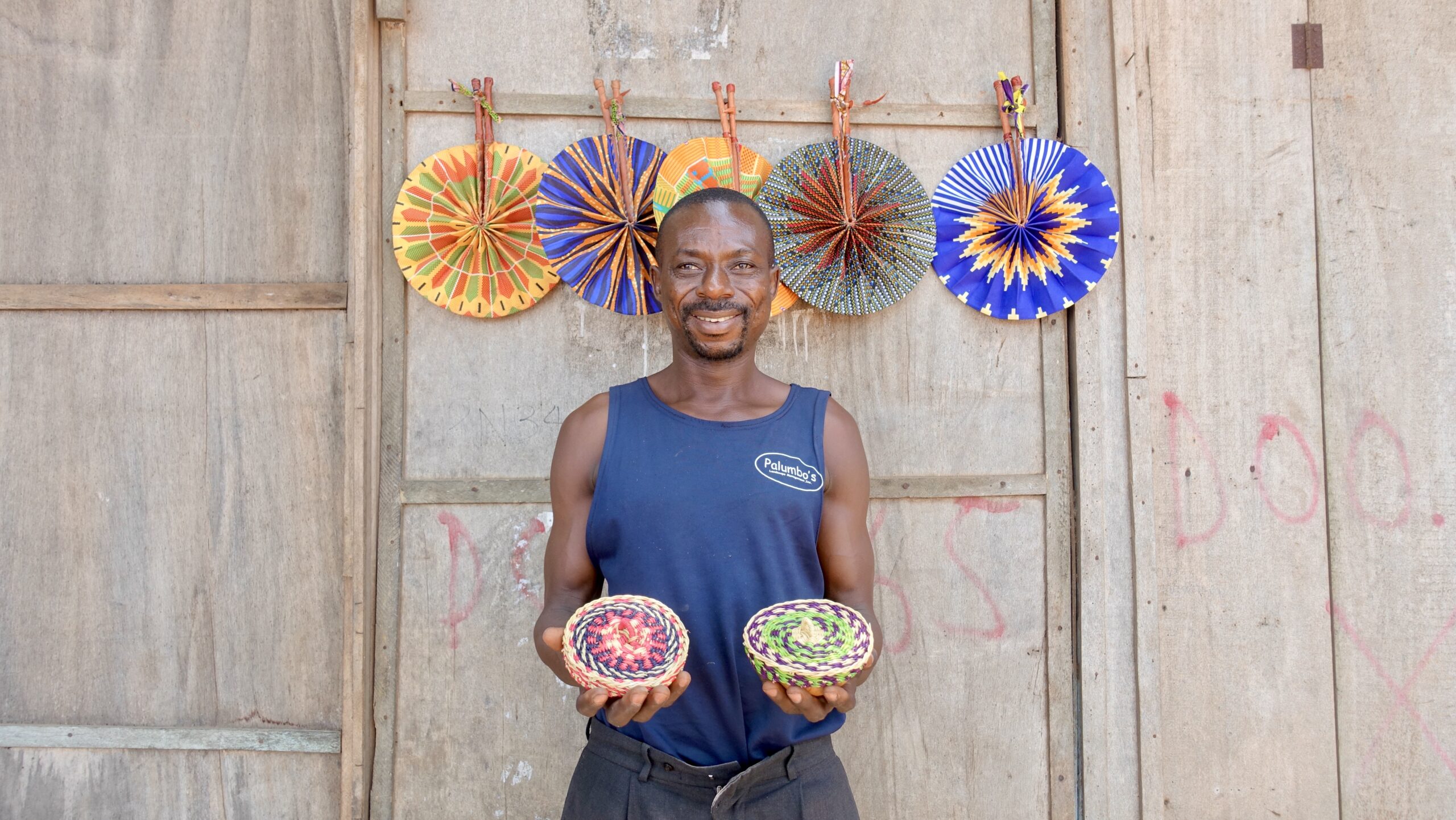Meet the artisan: Tahiru
Basket weaving using elephant grass originates in Ghana’s Northern region, Bolgatanga. Farming was a little challenging back then because of flooding and other climate effects, so weaving became a means to supplement the income of its people. Over time this tradition passed down among generations and has become a part of Ghana’s arts culture.
For our packaging we use different types of cover design. All handmade by local Ghanaian craftsmen, the difference being the material used and the technique in making it:
- Elephant grass by Tahiru
- Raffia by Ike
- Full calabash by Ibrahim
Introducing our weaver Tahiru
Tahiru is originally from Bolgatanga. He moved to Ghana’s capital, Accra, in 1999 in search of a better future. Weaving has been part of he’s families tradition and eventually passed on to him. It has played a pivotal role in he’s daily life, becoming a way of life and expression.
This job made me marry, it made me take care of my family
Process of cover making
Tahiru uses dried elephant grass or napier grass, as it’s often called.
The dried grass is split into two.
Next, he rolls these strands across on he’s thigh and twists them together (screen 2 on video). This makes the grass stronger and more pliable for weaving. Once the strands are done, Tahiru is ready for weaving! (screen 1 on video).
If you would like to get to know Tahiru better, watch our English subtitled interview below were he explains in Twi (dialect of the Akan language spoken in southern and central Ghana) about himself and he’s job


Leave A Comment